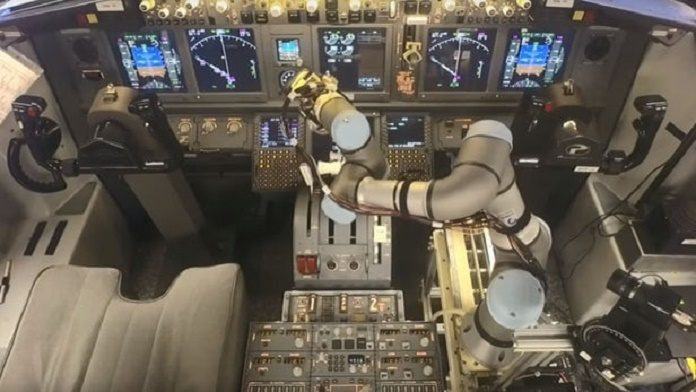Todays’ reality, robots become more trustworthy than humans. Although, robots behave in a predictable and exact manner the vast majority of the time. Robots are especially used in all industries. Soon, it will cover airplane cockpits. The news is that a robotic pilot showed its capability to fly and land a simulated Boeing 737.
Aurora Flight Sciences, the Aerospace company in collaboration with DARPA tested the robot, called ALIAS robot. The ALIAS robot is the abbreviation of Aircrew Labor In-Cockpit Automation System program. It can perform all the tasks a co-pilot would and is designed to allow for a reduced number of human crew members for flights.
While testing where ALIAS used a Boeing 737 simulator showed that, the robot is up to the task. It holds the potential of handling the virtual plane both in flight and during landing. Instead of setting out with a mission to boot human pilots off the plane, it helps in reducing pilot workload, augment performance and improve safety.
Sputnik said, “ALIAS envisions a tailorable, drop-in, removable kit that would promote the addition of high levels of automation into existing aircraft, enabling operation with the reduced onboard crew.”
In actual, the robotic pilot makes use of machine vision technology, robotic components to actuate the flight controls, an advanced tablet-based user interface, speech recognition and synthesis, and a knowledge acquisition process.
Sputnik said, “The military will often find themselves in stressful situations. They are keen to use systems that have the potential to interact with the crew; it is for this reason that the use of robots in the cockpit is becoming a highly likely option.”
“With DARPA’s ALIAS program, the military have evolved to incorporate automated capabilities, improving mission safety and success rates.”
During testing, the robot was able to occupy the role of co-pilot and land the plane. The demonstration was on a Boeing 737-800NG simulator, at the John A. Volpe National Transportation Systems Center, Cambridge, Massachusetts.
The company noted, “It even has the ability to learn aircraft procedures and visually gather information without requiring access to aircraft avionics.”
